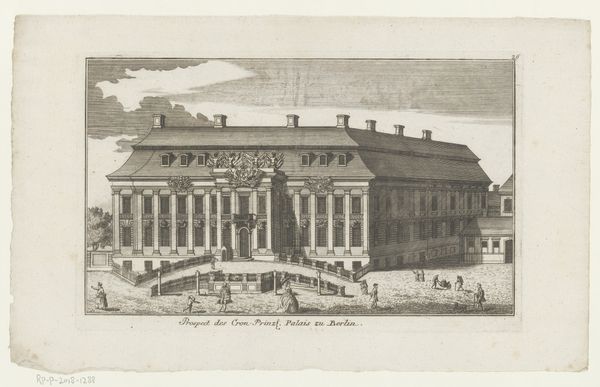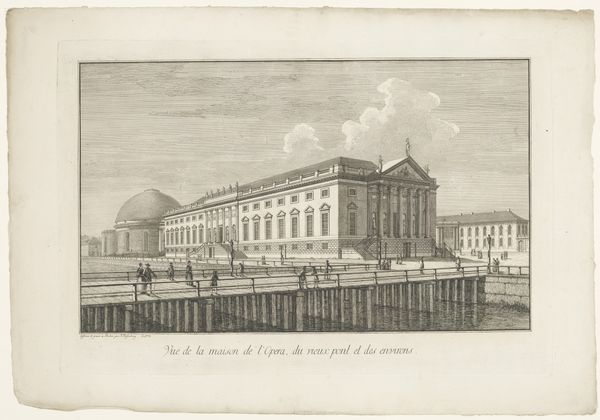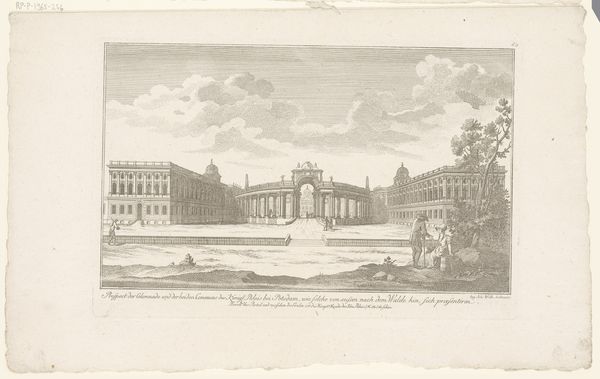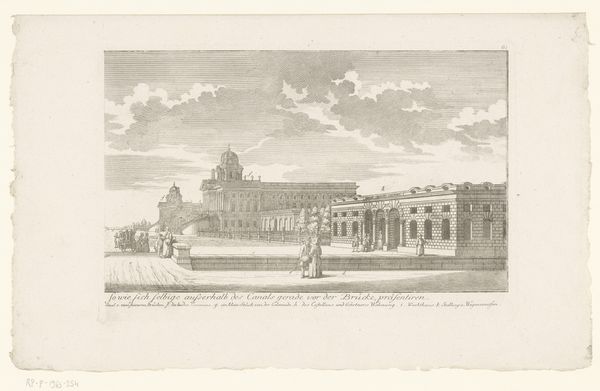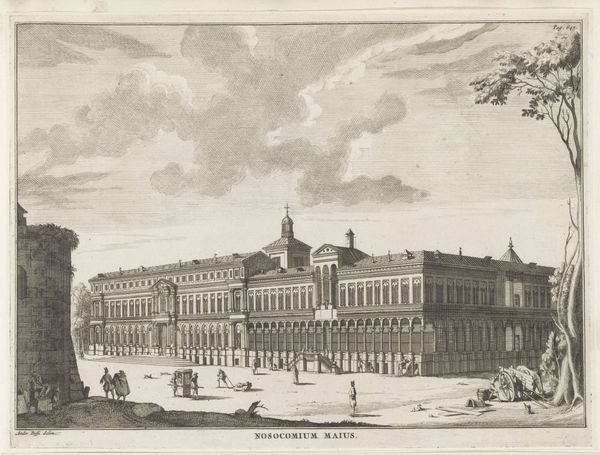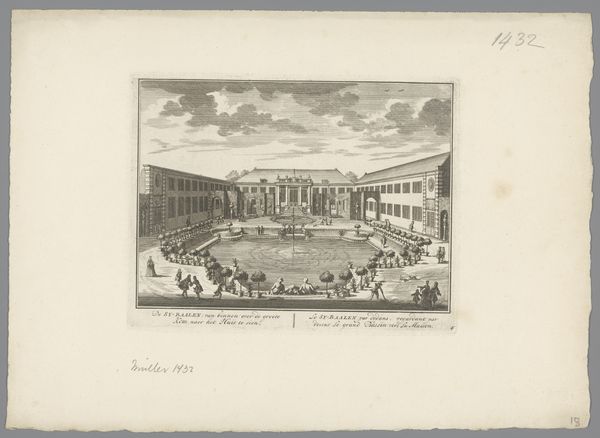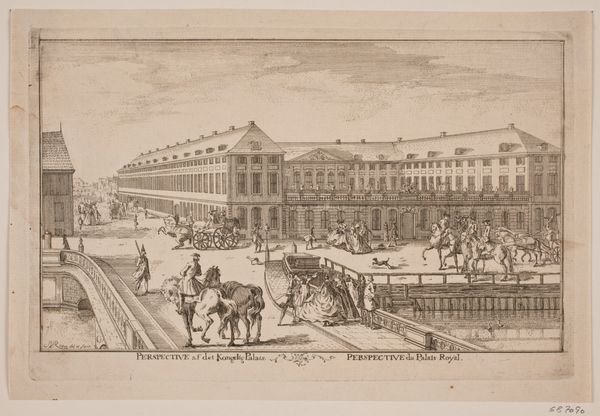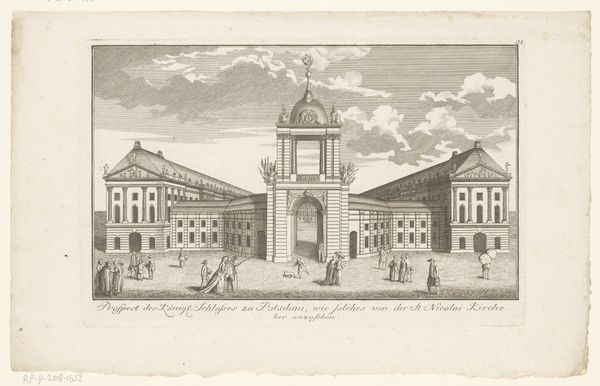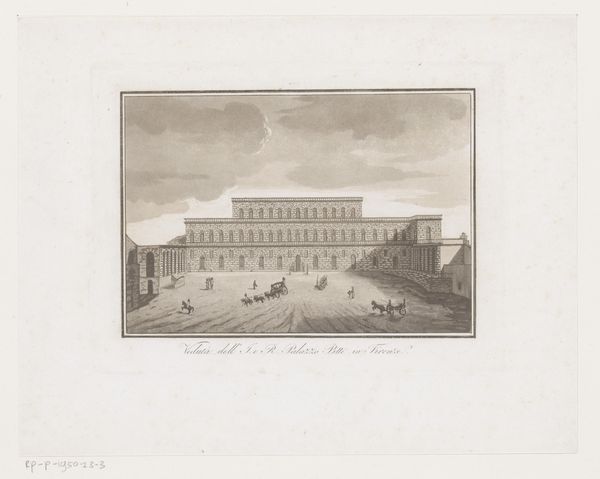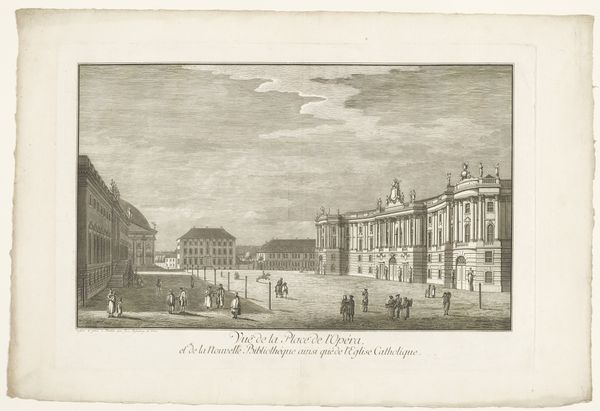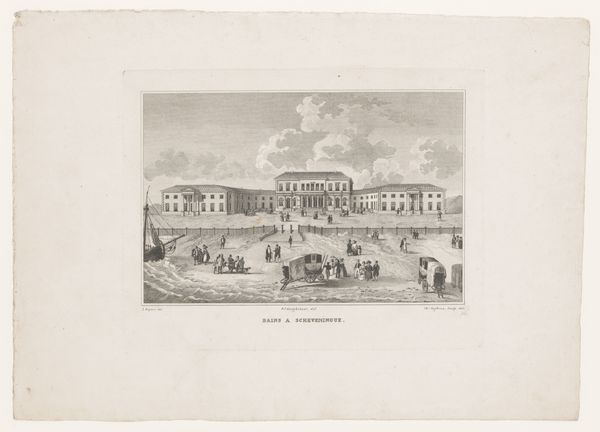
print, engraving, architecture
#
baroque
# print
#
cityscape
#
history-painting
#
engraving
#
architecture
Dimensions: height 210 mm, width 323 mm
Copyright: Rijks Museum: Open Domain
Editor: This is "Gezicht op de Deutsche Oper Berlin," a print made sometime between 1740 and 1774. It depicts the opera house in Berlin, but somehow, even though it’s a cityscape, it feels very staged. It makes me wonder how opera functioned within Berlin's society at this time. What was the intended audience and message conveyed through its architectural portrayal? Curator: That’s a fantastic question. Look closely at the figures. They're rather small in comparison to the imposing architecture, aren't they? This wasn't merely a depiction of a building; it was a statement about power, taste, and civic identity in Berlin. This Baroque architectural style reflects the cultural ambitions of the Prussian monarchy. Editor: I see what you mean. So the opera house is a symbol. What was the impact of artworks like this in shaping public opinion or the cultural landscape? Curator: Exactly. Consider the function of printmaking at this time. This engraving would have been widely circulated, shaping perceptions of Berlin’s cultural sophistication. The building is presented as a public spectacle and a political declaration. Think about the carefully placed figures; they help communicate who gets access, literally and figuratively. Editor: Interesting! So, this isn’t just about architecture, but about who architecture serves, or who it's meant to impress. I never thought of prints in terms of political messages like this. Curator: Precisely. It reveals a complex interplay between art, power, and the construction of cultural identity in 18th century Berlin. Now you see how history shapes our perception, even of a seemingly simple cityscape. Editor: I’ll definitely look at cityscapes differently from now on! Thanks.
Comments
No comments
Be the first to comment and join the conversation on the ultimate creative platform.

